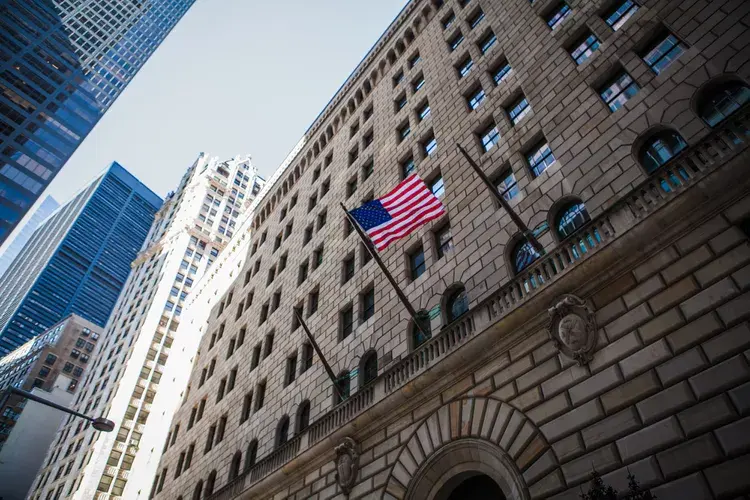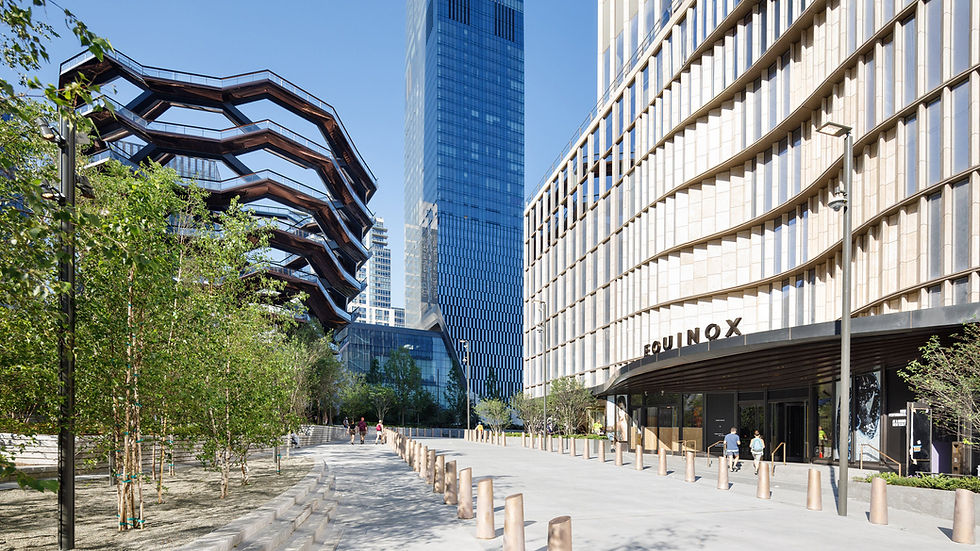Weekly Market Report - January 30, 2022
- Norman Bobrow

- Jan 30, 2022
- 6 min read
***
The Equity Group Investments founder, Sam Zell, expects the office market to rebound once Covid becomes “less of a risk,” albeit with hybrid work becoming part of the norm. The speed of recovery will depend largely on thriving industries that hire more workers to come into the office, he added. “Ultimately the amount of time people spend in the office is gonna be very much related to the demand for their time.” However, the office market is still not without its own problems. “Obsolescence is a big factor in the office market, and I think it’s gonna make some assets unsaleable without significant investment,” Zell predicted, saying his investment company has not been putting money in the office market.
Low rates have kept the office market stable, Zell said. But as he has in the past, Zell thinks the Federal Reserve needs to raise policy rates immediately. The Fed, which begins its two-day January meeting Tuesday, is expected to increase rates four times this year, starting in March after bond-purchase tapering ends.
***
Lever House, a classic of the international architectural style that opened in the early 1950s, is embarking on a $100 million overhaul. Ludwig Mies van der Rohe’s landmark Seagram Building is also undergoing major renovations, while the Park Avenue headquarters of JPMorgan Chase & Co. is being rebuilt with more than a dozen additional floors. Park Avenue landlords are responding to the rise of state-of-the-art glass office buildings in developing neighborhoods such as Hudson Yards, which have been attracting some of the city’s biggest tenants with new air filtration systems, outdoor terraces and proximity to new high-end restaurants and shops.
Park Avenue used to be where the big companies flocked. The Plaza district, which includes Park Ave, was the most expensive office market from the post World War II-era until five years ago. As recently as 2010, asking rents in the Plaza district were double those of the far west Manhattan office buildings. But employers have become less tethered to Midtown, and previous Plaza district mainstays such as Wells Fargo & Co. and KKR & Co. have migrated to new towers at Hudson Yards and Manhattan West. The far-west Manhattan market now has average asking rents of $134 a square foot, 43% higher than the Plaza district.
***
Forty-eight hotels are scheduled to add an estimated 6,500 rooms to the New York City market in 2022, according to fourth-quarter figures released Jan. 23 from research firm Lodging Econometrics. That puts the city on track for the nation’s second-highest growth rate, just behind Austin, Texas, for hotel rooms added among the 50 biggest markets. In the decade leading up to the pandemic, New York City added more than 41,000 hotel rooms, increasing the city’s room count by 47%. Business travel and tourism cratered during the pandemic and many hotels are struggling to sell rooms. But even lackluster demand hasn’t derailed hotel construction.
There were 121 hotels in the New York pipeline as of the fourth quarter, which would add more than 19,000 rooms in the coming years, Lodging Econometrics said. Some hoteliers say they are looking beyond the pandemic, confident that demand from tourists and business travelers will eventually recover. Yet hotel analysts caution that building more rooms could exacerbate the industry’s woes by boosting supply at a time of depressed demand. International and business travel are two key pillars of hotel demand in New York, and the disruptions caused by the Omicron variant have further delayed the return of these customers.
New York hotel occupancy rates averaged about 59% last year compared with 86% in 2019, according to preliminary estimates from hotel-analytics firm STR. Annual revenue per available room, a key metric for hotels’ bottom lines, reached only 57% of 2019 levels. Concerns over the glut in hotel rooms began before the pandemic, as competition from new developments and short-term rental websites like Airbnb Inc. put downward pressure on room rates and prompted several owners to default on their mortgages.
***
Overall, commercial-property sales totaled a record $809 billion in 2021, according to data firm Real Capital Analytics last year. That was nearly double 2020’s total, and it exceeded the previous record of about $600 billion in 2019. The surge in activity reflects investors’ views that work and lifestyle changes brought on by Covid-19 aren’t fleeting. Real-estate investors say they don’t see 2022 sales slowing down much, if at all, from last year’s record pace. Manhattan, which typically has been at the top of the sales list, ranked ninth in 2021 with $18.7 billion in sales.
“Manhattan has just fallen off the map relative to its size.” The most popular commercial property type last year was rental apartments, whose owners have been able to keep raising rents during the pandemic in part because for-sale housing is too pricey for many to afford. Multifamily sales totaled $335.3 billion, up 128% from 2020. Industrial property was in second place with $166.1 billion in sales, up 56% from 2020. Office buildings had sales volume of $139.2 billion, well short of the category’s record year, as demand for suburban and Sunbelt state office properties failed to offset weak investor demand in the biggest cities for all but the highest quality towers.
***
Gross domestic product, the broadest measure of goods and services, in the fourth quarter accelerated from the third quarter’s growth of 2.3%, adjusted for inflation, the Commerce Department said Thursday. The gain reflected solid spending by households, much of it occurring early in the quarter, and companies pushed to rebuild depleted inventories as they try to overcome persistent supply shortages. Output grew 5.5% in all of 2021, when comparing the fourth quarter to the same period a year earlier. The economy hasn’t grown that fast since 1984, during President Ronald Reagan’s first term, when the country was rebounding from a double-dip recession and an era of high inflation. Thursday’s report contained warning signs. Most of the growth owed to companies’ restocking rather than people and firms buying stuff.
In part, the rise in inventory investment reflected a rebound from super-low inventory levels in the summer. Inventory levels remain low because of persistent shortages. Excluding the inventory effects, output grew at a modest annual rate of 1.9% in the fourth quarter. The forecasting firm IHS Markit projects that output will grow at a 2% annual rate in January through March. That would mark the weakest quarter of growth since the recovery began in mid-2020. The company gave an early peek at economic growth this week when it reported that its index of U.S. services and manufacturing activity—covering most of economic activity—slowed sharply.
***
National Office Market Net Occupancy Tips Modestly Positive; Fundamentals Steady in Recovery
The U.S. office market continued to recover in the fourth quarter of 2021, noted by positive net absorption and slowing vacancy growth. The spread of the Delta variant slowed the pace of office market recovery, but market fundamentals modestly improved nonetheless. The emergence of the Omicron variant presents additional challenges to the recovery of U.S. office markets, but the efficacy of vaccines and the rising rates of immunized Americans are improving the outlook for 2022.
Economic recovery in the U.S. slowed in the second half of 2021. While total employment increased and the unemployment rate continued to fall, the pace of monthly job gains slowed. In the fourth quarter of 2021, nonfarm employment grew by 0.7%, or 1.1 million jobs. This is lower than the 1.8 million and 2.0 million jobs added during the second and third quarters of 2021, respectively. Despite the job gains, labor markets have recovered only 90.9% of the jobs lost between March and April 2020. Slowed employment growth has been similarly exhibited in office-using employment; non-government sectors have demonstrated stronger recovery in 2021.
Office-using sectors were less severely impacted by job losses in the pandemic due to remote working arrangements. This helped support economic recovery but will likely apply downward pressure on office demand in the period ahead. Non-government office-using labor sectors have recovered 101.2% of the jobs lost between March and April 2020.









Comments